With fifteen standard roof types to choose from, each boasting its own set of pros, cons, and distinctive appearance, selecting the right roof involves a specialist evaluation. The best roof shape for your house depends on its architectural style, the local climate, and your budget.
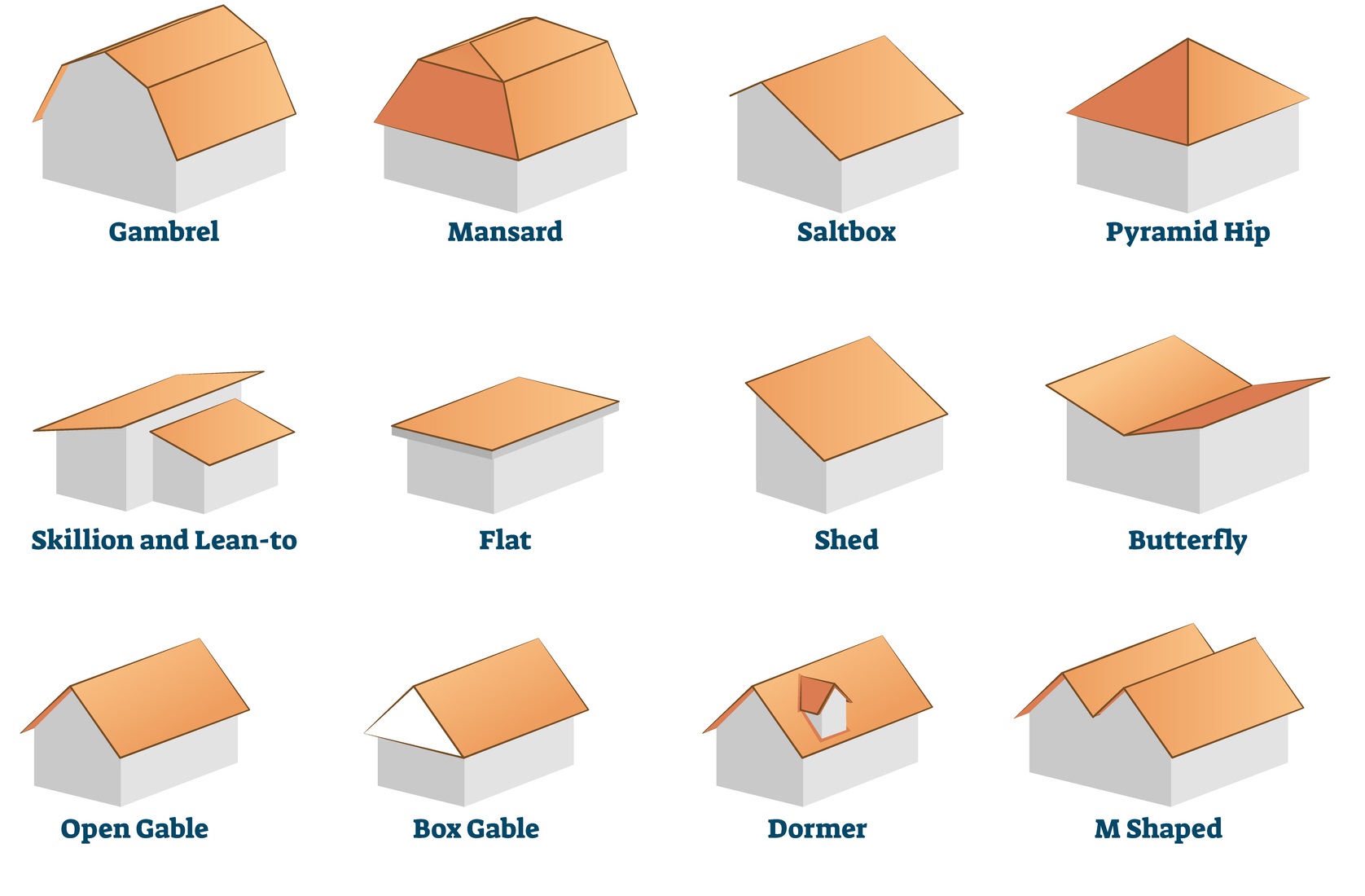
| Name of the Roof | Short Description |
|---|---|
| Gable | Two sloped sides forming a triangular shape. Common and simple design. |
| Gambrel | Similar to gable but with two sets of symmetrical slopes on each side. |
| Hip | Four sloping sides meeting at a peak. Good for high-wind areas. |
| Hip and Valley | Intricate version of the standard hip roof with multiple hipped sections. |
| Skillion | Single flat, sloped surface. Popular in ultra-modern architecture. |
| A-Frame | Two steep sloped sides resembling the letter "A." Works well in all climates. |
| Bonnet | Hip roof with four sides and a slight slope at the bottom, extending past walls. |
| Butterfly | Two sides slope downward, meeting at a valley. Distinctive mid-century modern style. |
| Dutch Gable | Combination of hip and gable roofs. Gable surrounded by a hip roof. |
| Shed | One sloping side, similar to a skillion roof. Inexpensive and modern. |
| Lean-To | Shed roof used for additions with one sloping side against an existing structure. |
| Clerestory | Vertical row of windows at the top of a roof line. Maximizes natural daylight. |
| Mansard | Cross between gambrel and hip roof. Four hipped sides with two slopes. |
| Pyramid | Variation of hip roof. Four sides meeting at a peak, forming a pyramid shape. |
| Jerkinhead | Gable-style roof with clipped sections on each end. Common for certain architectural styles. |
Here’s an overview of different roof design styles with pictures.
GableGambrelHipHip and ValleySkillionA-FrameBonnetButterflyDutch GableShedLean-ToClerestoryMansardPyramidJerkinhead
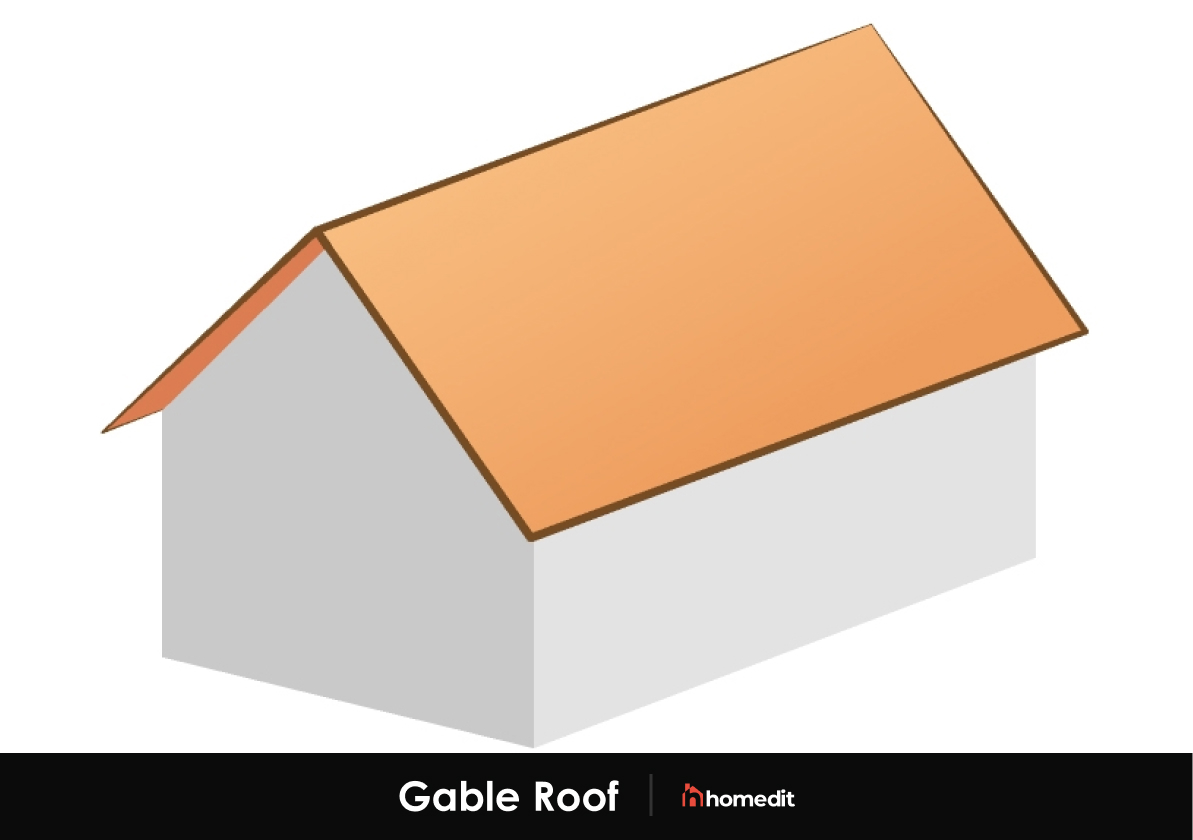
A gable roof has two sloped sides and forms a triangular shape. It’s the most simple roof and one of the most common.
Pros: The pitch of gable roofs promotes water and snow runoff, and the simple design is fast and cost-efficient to build. Gable roofs match all types of architectural styles.Cons: A gable roof is not ideal for areas with high winds or hurricanes.
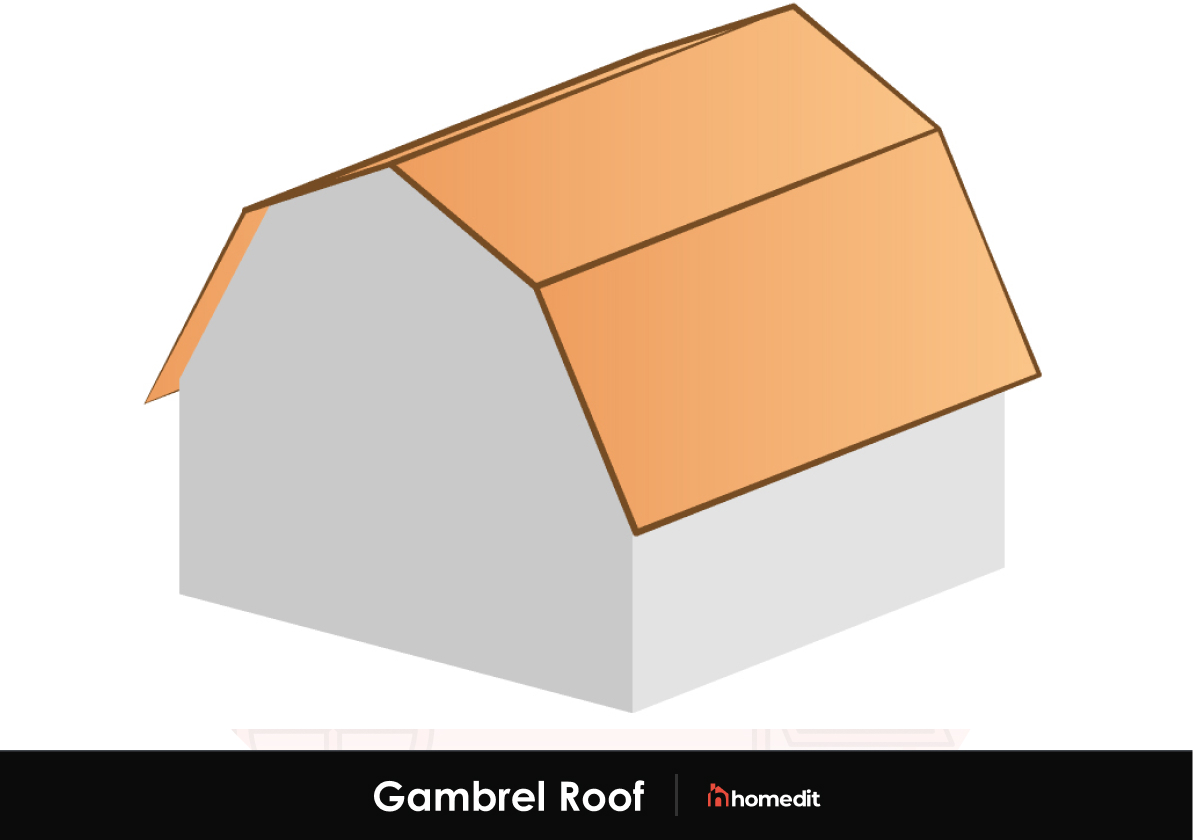
Gambrel roofs are similar to gable styles – only they have two sets of symmetrical slopes on each side. These roofs date back to Dutch-colonial times but are now widespread on homes and barns.
Pros: Gambrel roofs feature a simple, more decorative design than a gable roof but are still easy and cost-efficient to build. The pitch promotes adequate rain runoff.Cons: Because gambrel roofs have a shallow top slope, they can’t bear the weight of a heavy snow load. These roofs also don’t perform well in hurricane zones.
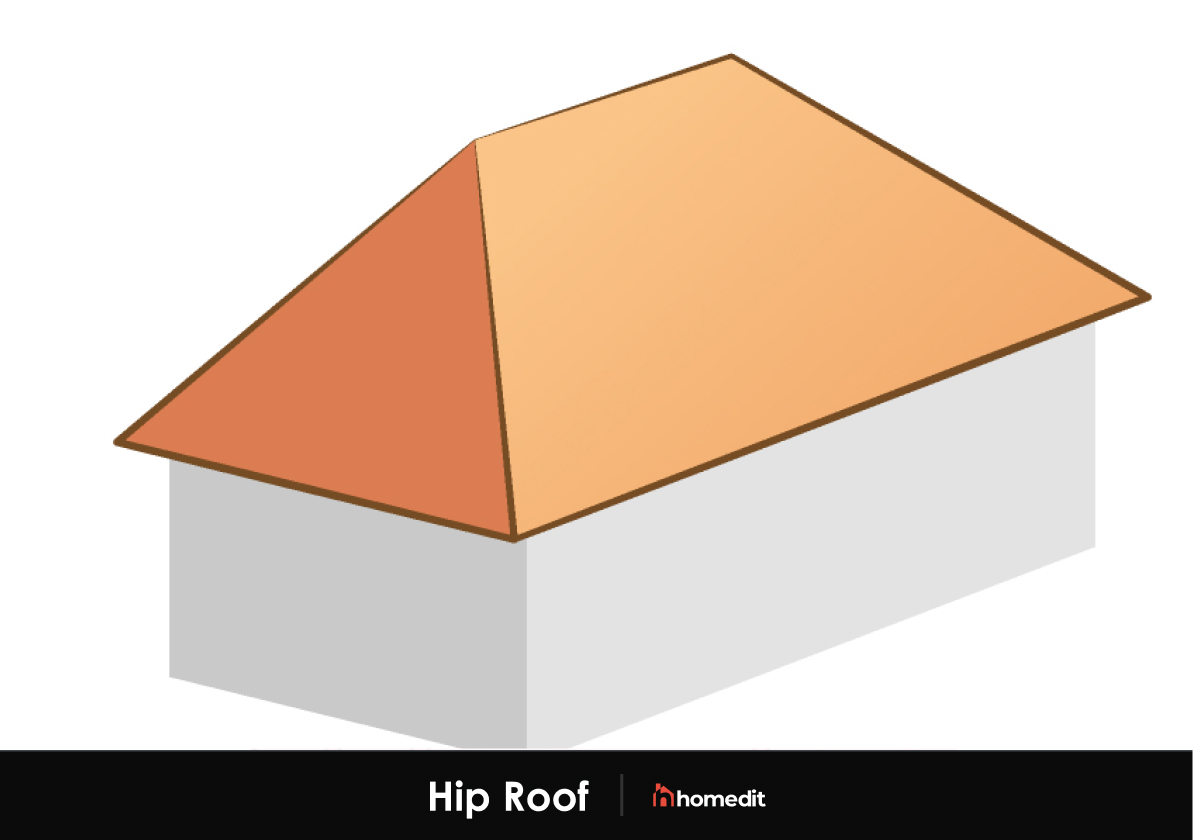
Hip roofs feature four sloping sides that meet at a peak or ridge. A standard hip roof has a square-like shape, but there are variations of this style, including hip and valley roofs and pyramid roofs.
Pros: Hip roofs are self-bracing and can withstand high winds, making them a good choice for hurricane-prone areas. They promote water and snow runoff and can add to the look of a home.Cons: Since hip roofs have several seams, they’re more likely to leak. They are also more expensive to construct than a standard gable roof.
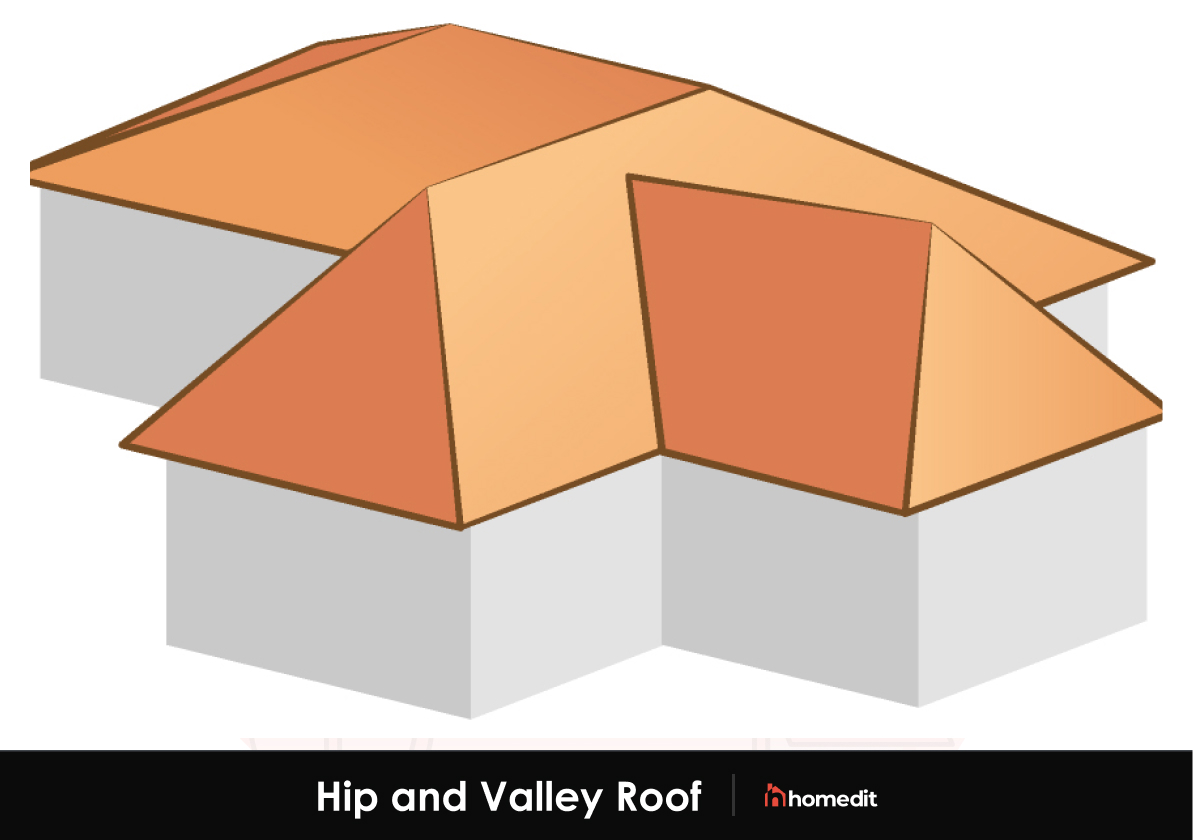
Hip and Valley roofs are intricate versions of the standard hip roof. They feature multiple hipped sections that meet at a valley.
Pros: Hip-style roofs are self-bracing and ideal for hurricane and high-wind climates. Their slope promotes rain and snow drainage, and their multiple sides allow for an excellent gutter system.Cons: Hip and Valley roofs have many seams, making them more prone to leaks. They are also complicated and expensive to build.
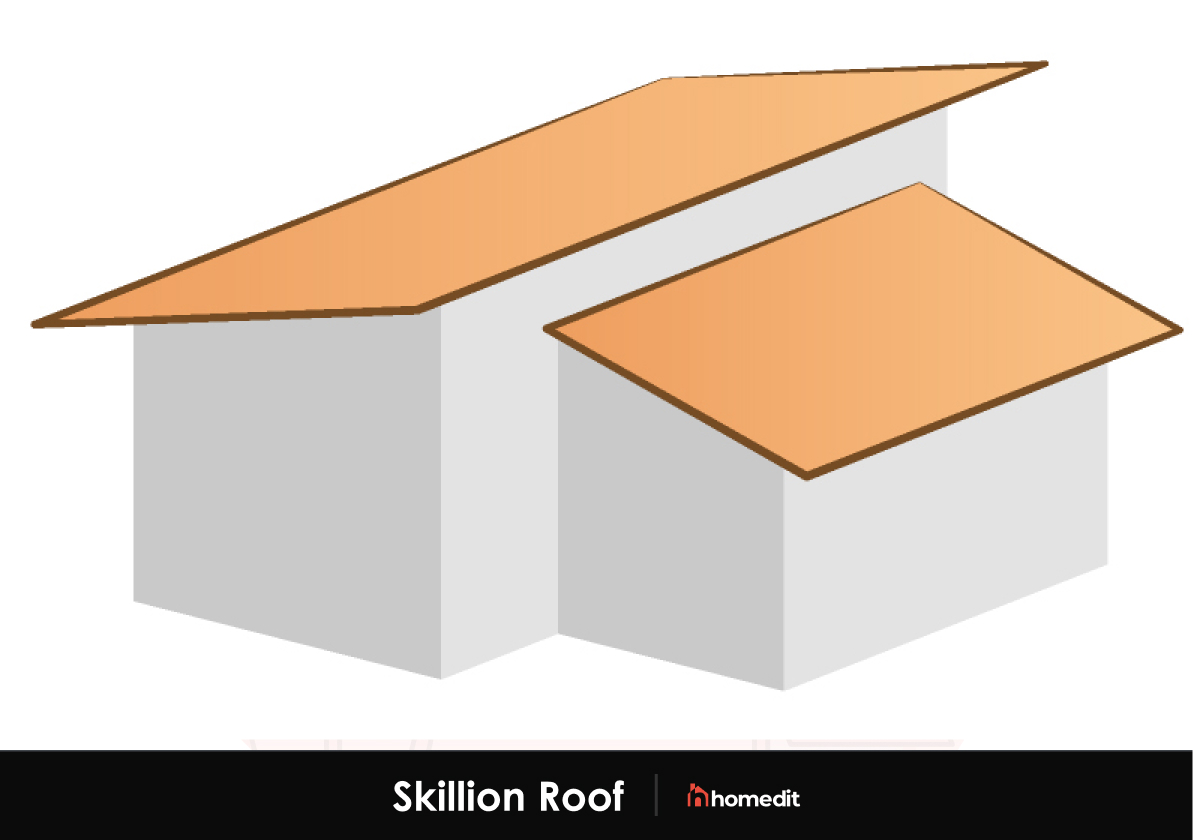
Skillion roofs feature a single flat, sloped surface. These roofs are prevalent in ultra-modern architecture.
Pros: Skillion roofs are simple and inexpensive to build. They give a home a contemporary look, and their steep slope makes them ideal for rainy and snowy climates.Cons: The single slope of a skillion roof can’t withstand high winds, and the steep pitch can lessen attic space.
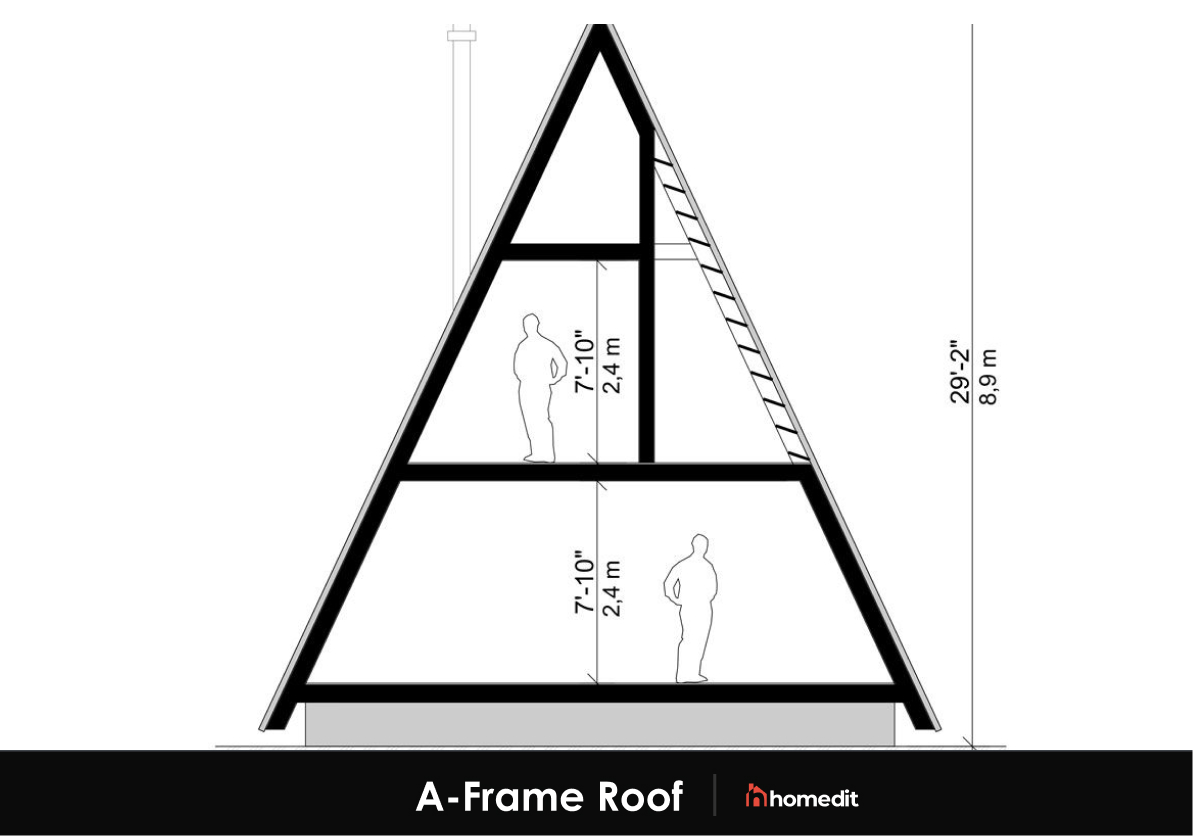
A-frame roofs have two steep sloped sides that touch the ground and meet at a peak on top. Their shapes resemble the letter “A.” While this roof style is popular for cabins, it works well in ultra-modern architecture.
Pros: The A-Frame roof works well in all climates, withstanding rain, snow, and high winds. The “A” shape is a simple design to DIY.Cons: The steep slopes create awkward interior angles. A-frame buildings also pose heating inefficiencies.
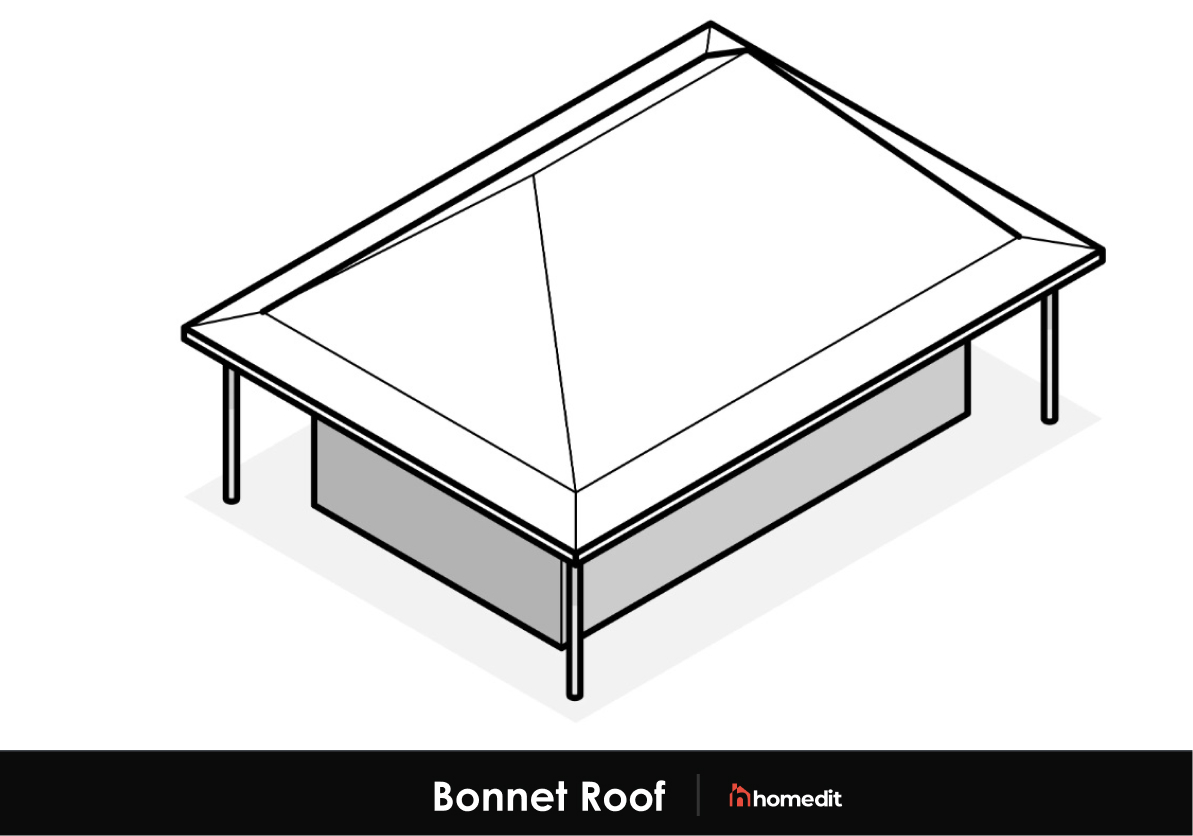
A bonnet roof is a hip roof with four sides and a slight slope at the bottom, extending past the home’s exterior walls, providing shade like a bonnet. Bonnet roofs are most popular in tropical climates, over pool houses, and gazebos.
Pros: The shape of a bonnet roof supplies shade and protection around all sides of a home. Its hipped sections make it high-wind resistant and allow space for an excellent gutter system.Cons: Bonnet roofs are expensive to build. They also have many seams, putting them at a higher risk for leaks.
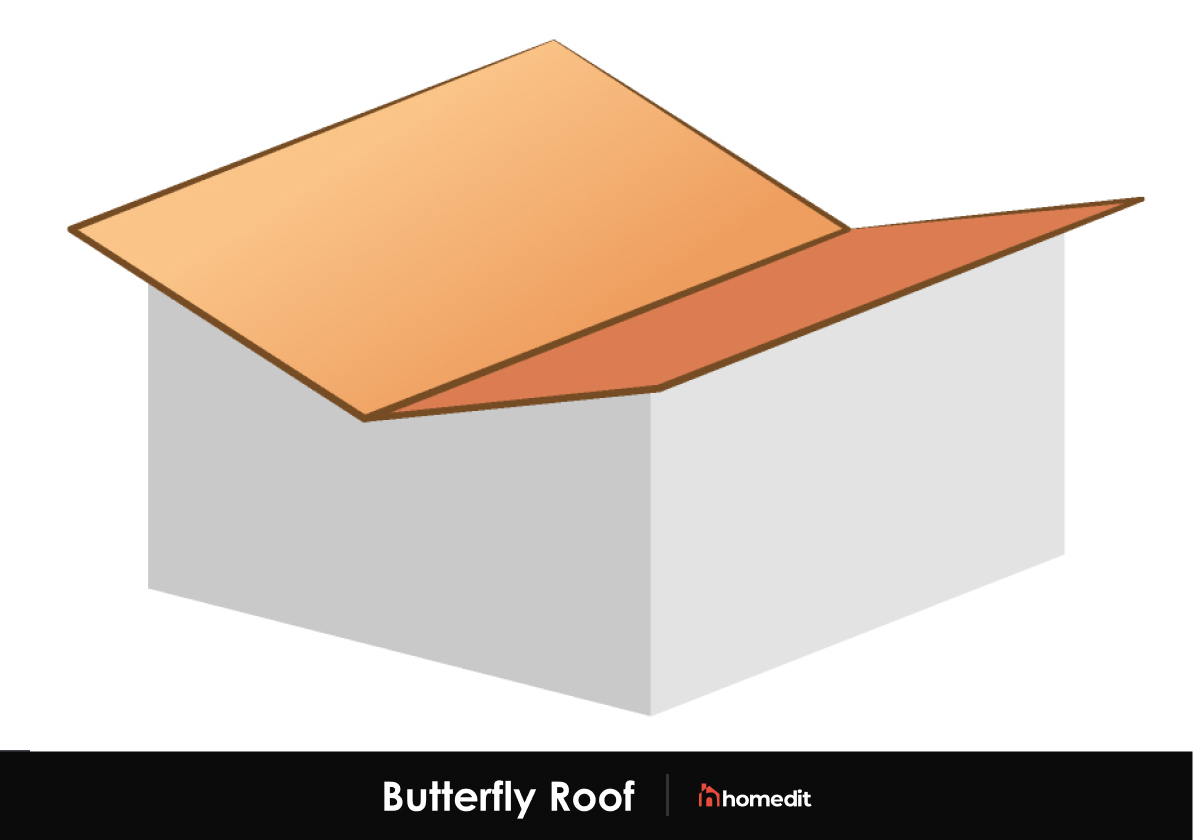
Butterfly roofs are the reverse of a gable roof – they feature two sides that slope downward, meeting at a valley in the middle. These distinctive roofs have a mid-century modern style.
Pros: The pitch of a butterfly roof promotes water drainage and is ideal for collecting rainwater. The aerodynamic design does well against high winds.Cons: Butterfly roofs are expensive to build and aren’t ideal for snowy climates. Snow can accumulate on the ridge of these roofs, leading to leaks.
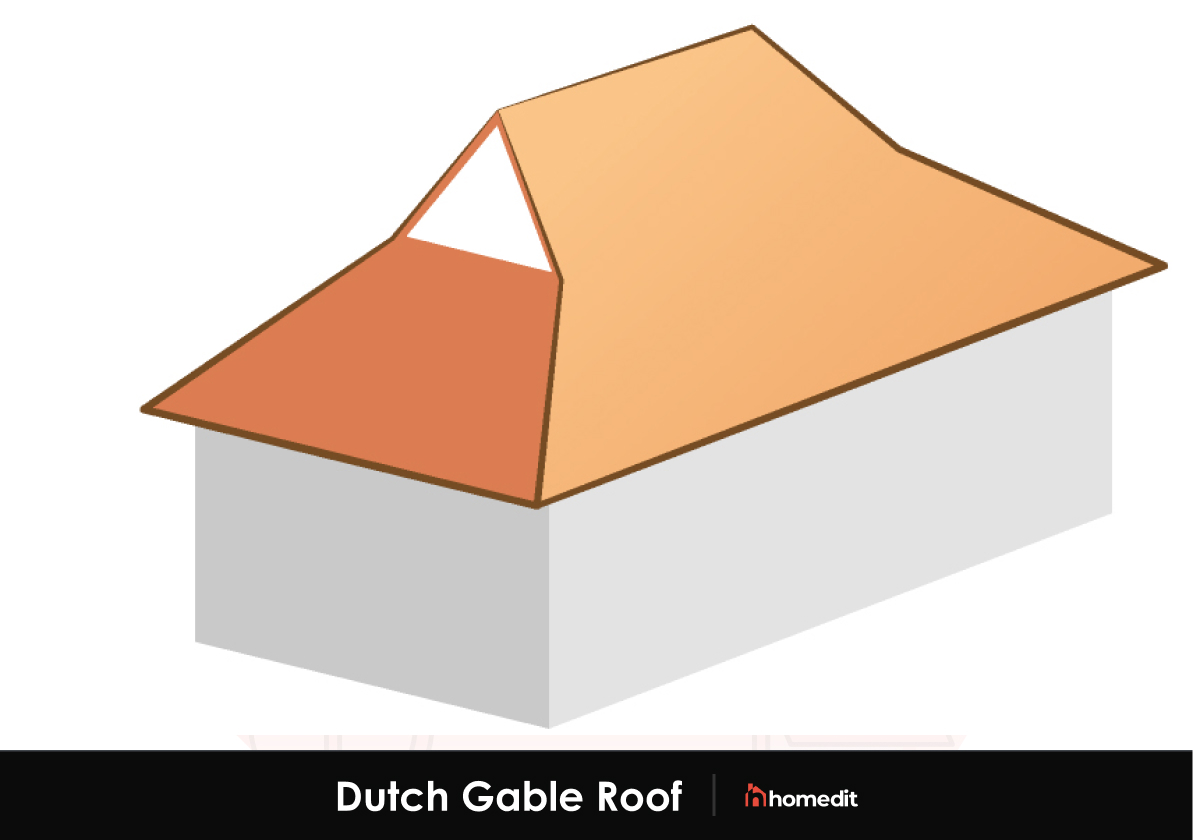
Dutch gable roofs are a combination of hip and gable roofs. They feature a gable roof surrounded by a hip roof with four sloping sides. They are also known as dutch hip roofs.
Pros: Dutch gables give a home a high-end look and can increase top floor space. They stand up well to all kinds of weather, including snow, rain, and high winds. Cons: Dutch gable roofs are expensive to build. They also have multiple seams, increasing their chance of leaks.
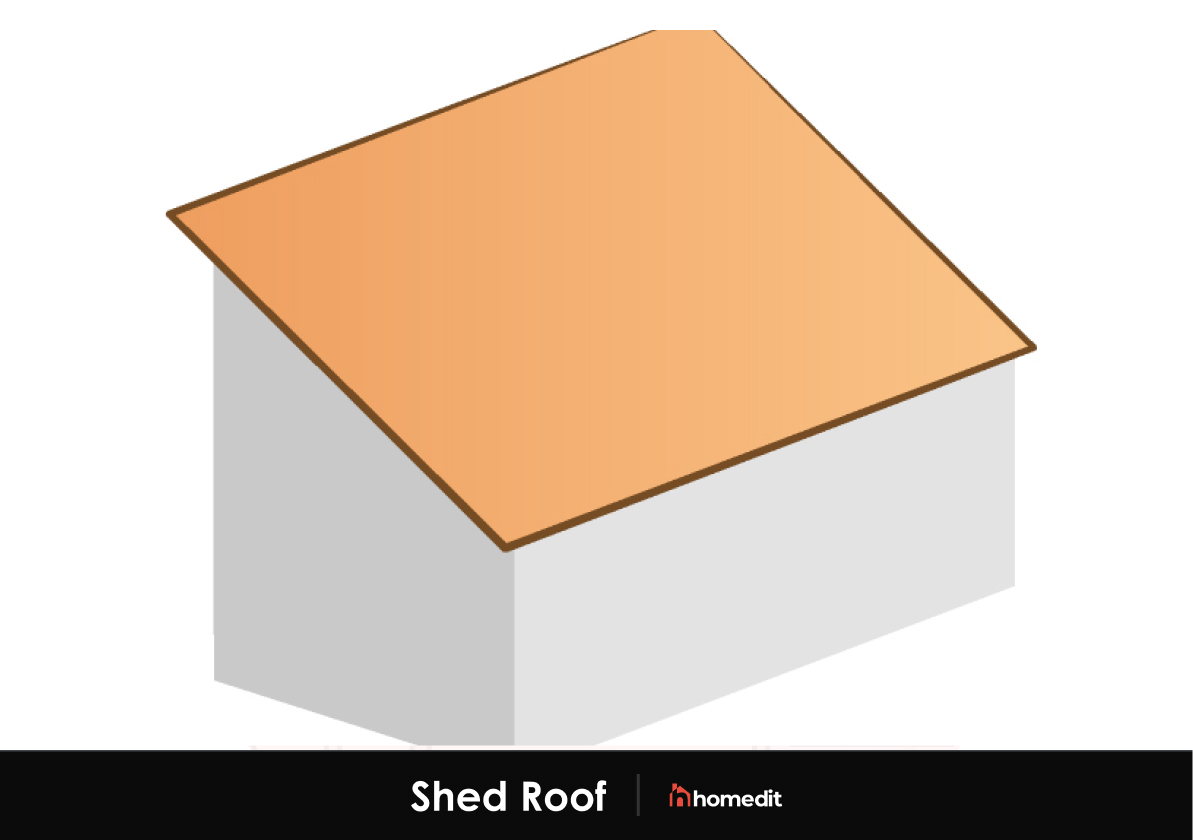
A shed roof features one sloping side, similar to a skillion roof. These roofs work for several design styles.
Pros: A shed roof is inexpensive to build and works on modern homes and outbuildings. The steepness of these roofs promotes snow and water drainage. Cons: Shed roofs can damage during high-wind storms. They also don’t fit every home style.
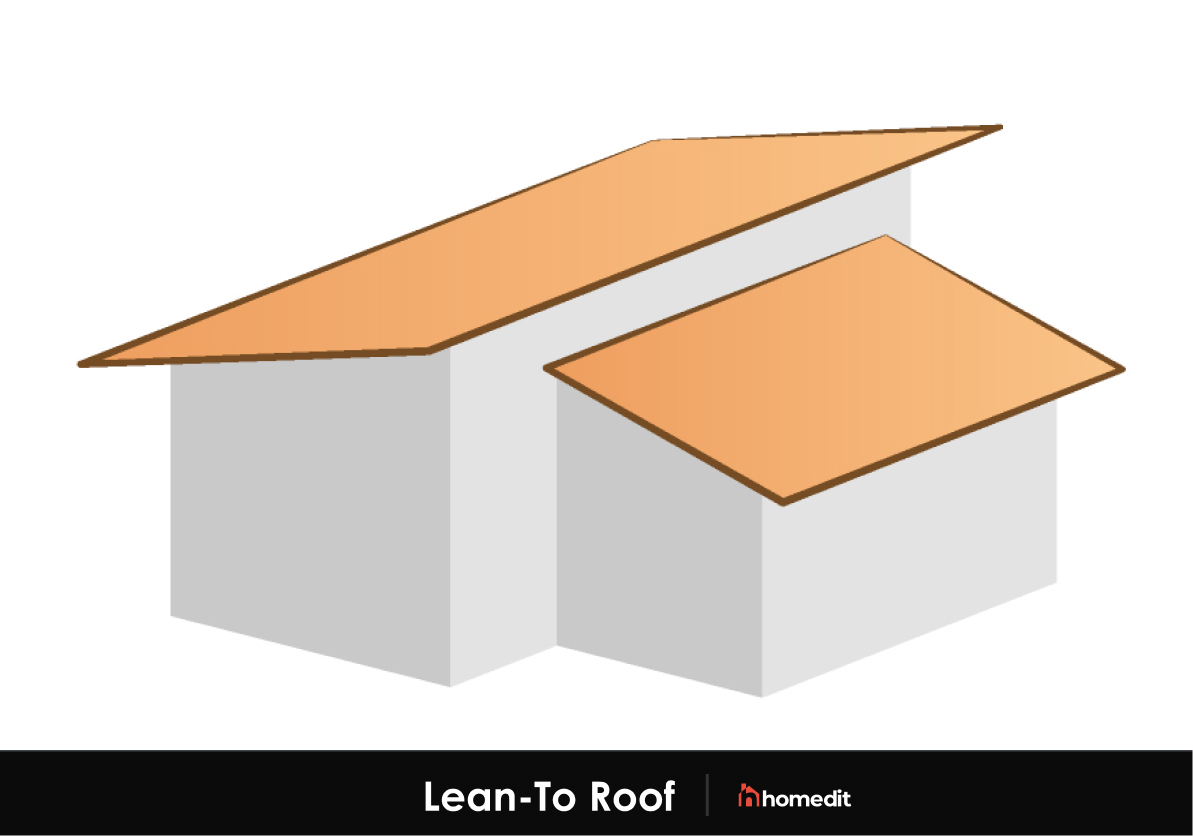
Lean-to roofs are a version of the shed roof used for additions. They have one steep sloped side that butts up against the exterior wall of an existing structure.
Pros: Lean-to roofs are the easiest option for home or outbuilding additions. Their simple design is inexpensive to build. The steep slope of lean-to roofs promotes adequate water and snow drainage.Cons: Lean-to roofs aren’t the best choice for hurricane zones.
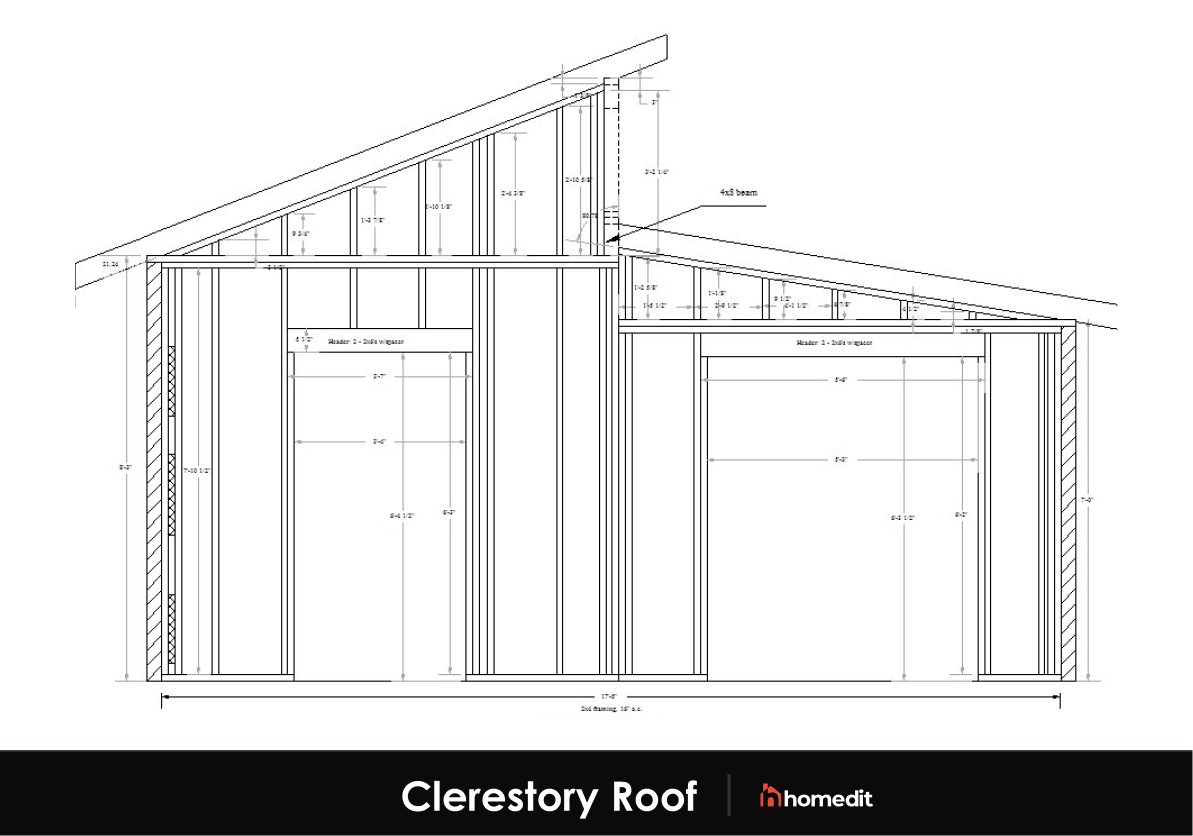
Clerestory roofs feature a vertical row of windows at the top of a roof line. A standard clerestory roof has a sloping roof under the row of windows and another on top.
Pros: The purpose of clerestory roofs is to maximize natural daylight and ventilation. These roofs can also help with solar heat gains, which is beneficial in cold climates. Clerestory roofs are customizable and can fit many home designs.Cons: The windows on clerestory roofs increase the risk of leaks and require a lot of maintenance.
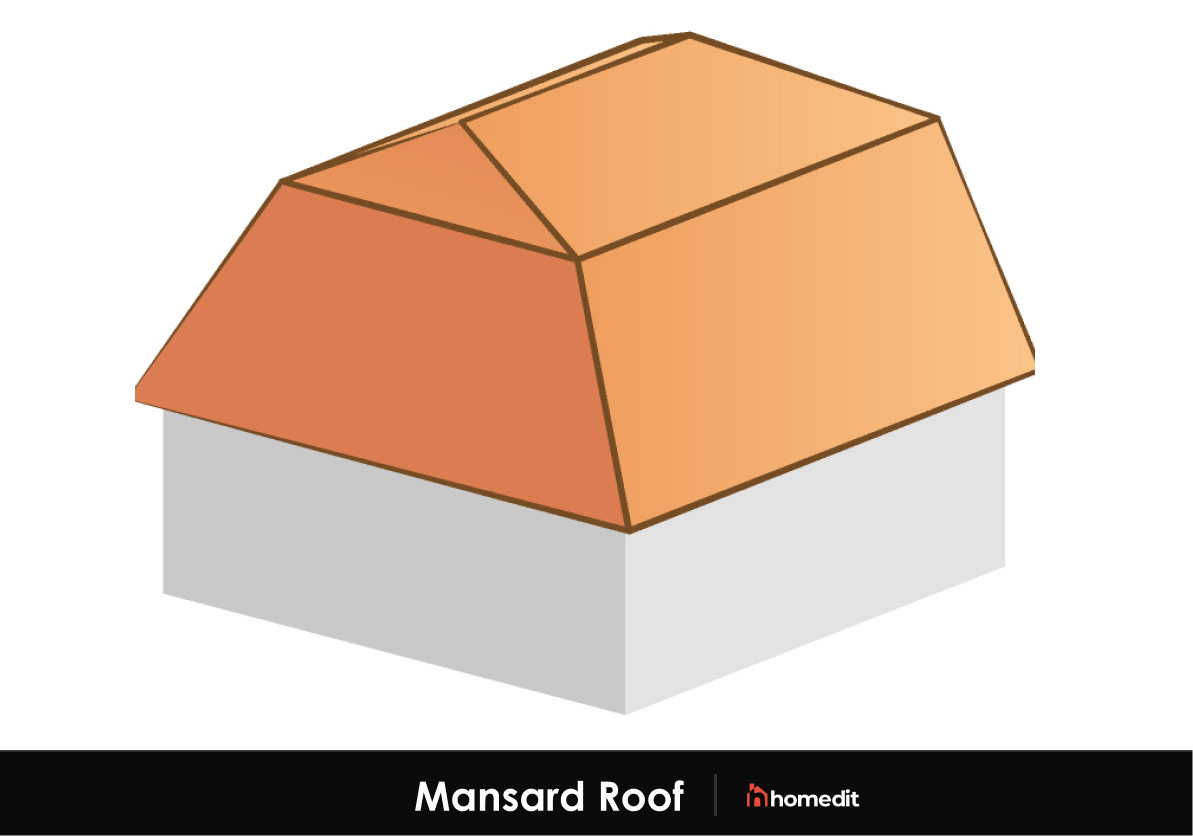
The Mansard roof is a cross between a gambrel and a hip roof. It has four hipped sides, but each side has two slopes that make the roof look curbed. The Mansard roof is also called a curb roof or French roof.
Pros: The Mansard roof has a unique aesthetic and allows for more space on the top floor or attic.Cons: Mansard roofs have a shallow top pitch that gives water and snow a place to pool. Because of this, these roofs are the least weather resistant of all. They’re also complicated and expensive to build.
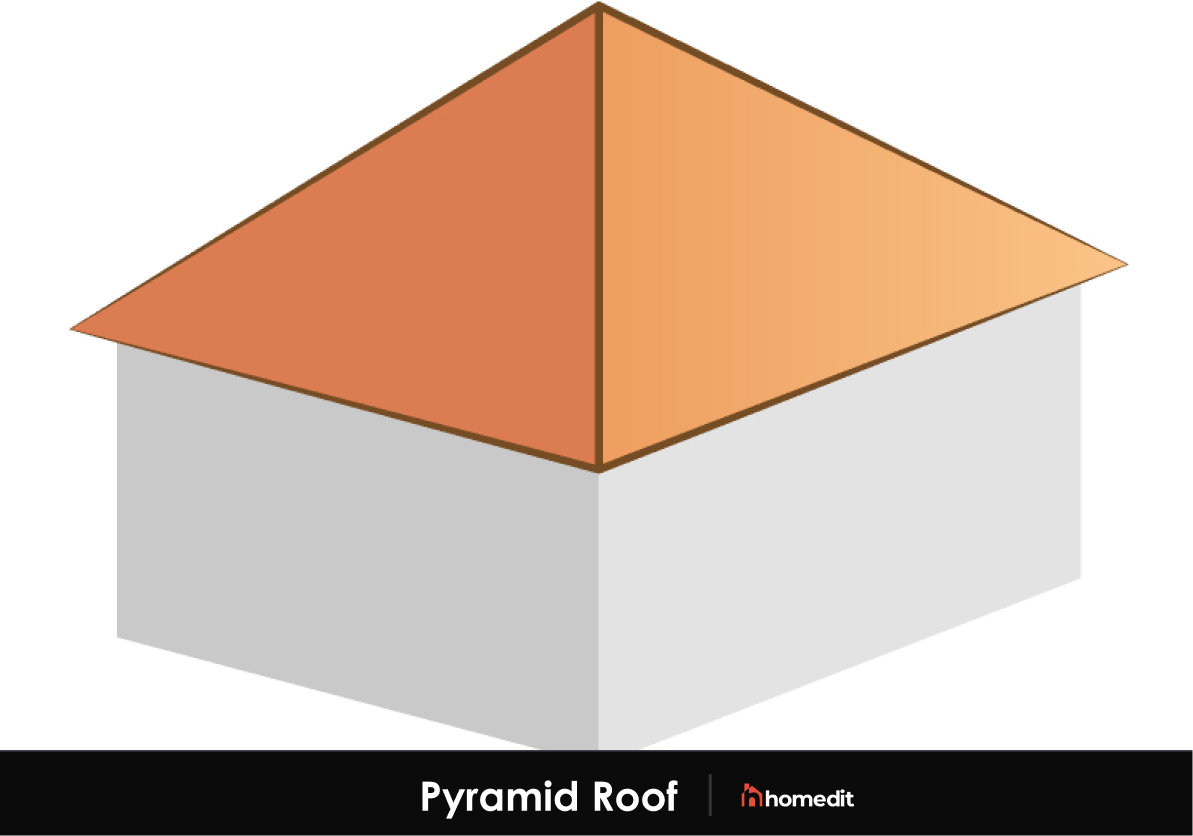
A pyramid roof is a variation of a hip roof. Its four sides meet at a peak in the middle, forming the shape of an ancient Egyptian pyramid.
Pros: Pyramid roofs are self-bracing and weather resistant. They allow ample space for a gutter system and can add height to a home or building.Cons: Pyramid roofs have multiple seams, which increases the risk of leaks. They are also more expensive to build than a standard gable.
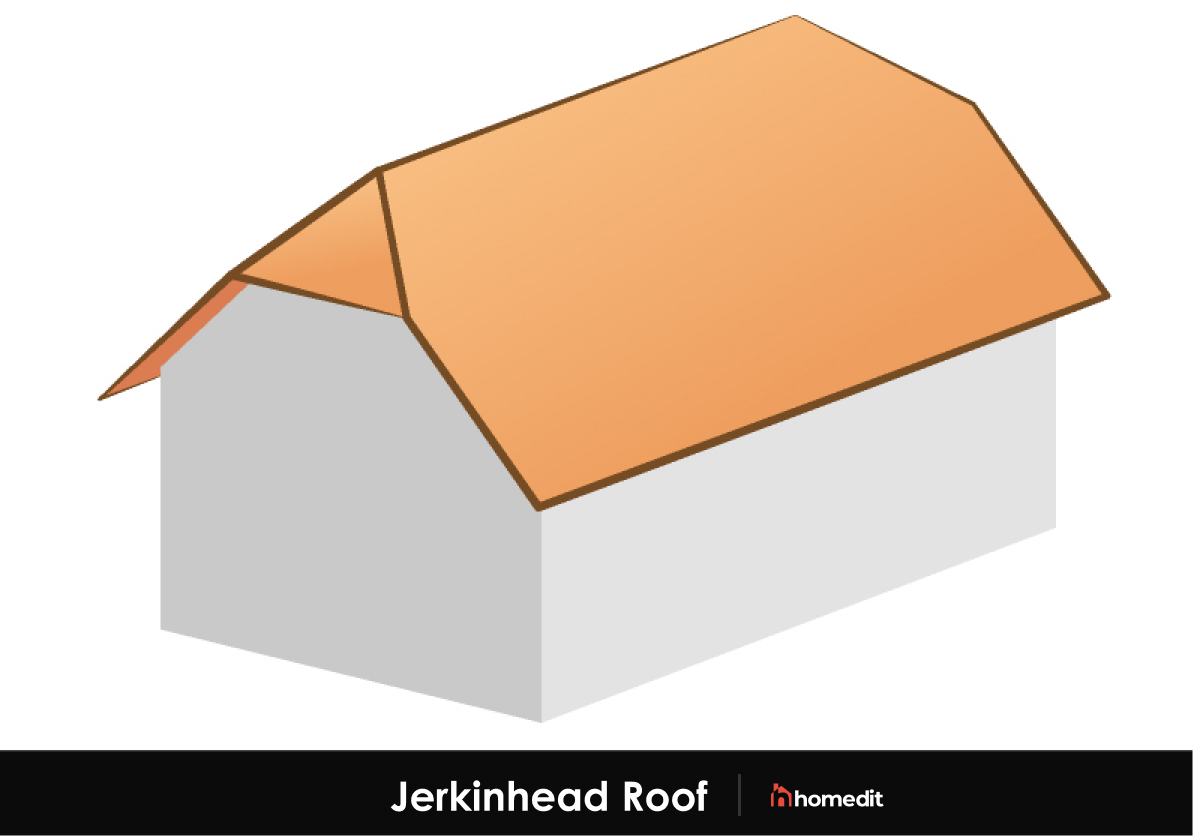
Jerkinhead roofs are a gable-style roof with clipped sections on each end. They are most common for Tudor, Craftsman, and Queen Anne-style homes.
Pros: The clipped ends on jerkinhead roofs help them to withstand high winds better than a standard gable. They have a steep pitch that promotes water and snow drainage, and the clipped ends on these roofs can give a home an old-world look.Cons: Jerkinheads are more expensive to build than a standard gable.
Roofs with a steep pitch do best in snowy climates since they promote snow runoff. Some options are gable, jerkinhead, a-frame, and hip-roofs.
Almost all roof shapes work fine in a hot climate – the most critical factor is the roofing material. If you live in a hot area, go for a light-colored roof.
Any steeply angled roof can do well during snowstorms. The pitch on the roof should be at least 1:12.
The hip roof is superior in windy and hurricane-prone climates. Several variations of this design include the pyramid roof, dutch gable, bonnet, and hip and valley roof.

Gisele Bundchen's contemporary twist on this emerging design trend is the talking point of her kitchen
Zendaya taps into the subtle power of this accessory to ensure her neutral living room is never boring
Amazon has become a go-to for chic home decor – here’s what we’re shopping from the 2024 Spring Sale
This designer's 'every seat needs a surface' rule has changed my living room layout forever – here's what I mean
5 designer Amazon storefronts that make shopping for stylish homeware so much easier
Joanna Gaines' 'mesmerizing' garden is the perfect example of how to grow cut spring flowers at home
Tan France opts for this stabilizing color palette to 'ground' his guest cottage, experts say
Shark's St Patrick's Day sale is here - and you can save $100s on vacuums and air purifiers
Matthew and Camila McConaughey's raw cabinets possess a texture and warmth that's replicable in our kitchens
Replacement Siding: Lifespan, Materials, Cost and More
What is a Pyramid Roof?
What Is Board and Batten Siding?
What Is A Bonnet Roof?
Vertical Siding: The Newest Exterior Trend
House Siding Colors: Trendy Choices for Every Style
What Is An ADU And Why Should I Have One?
What Is Stucco Siding?
What Is An A-Frame Roof?
Masonite Siding: A Solid Siding Option or a Thing of the Past?